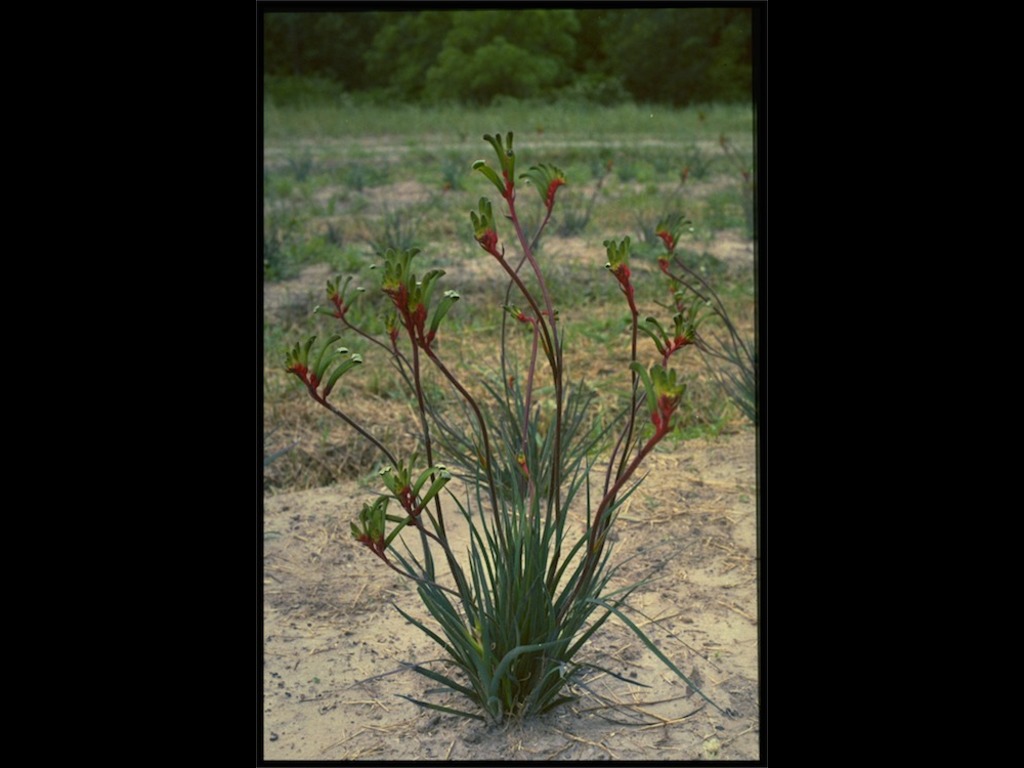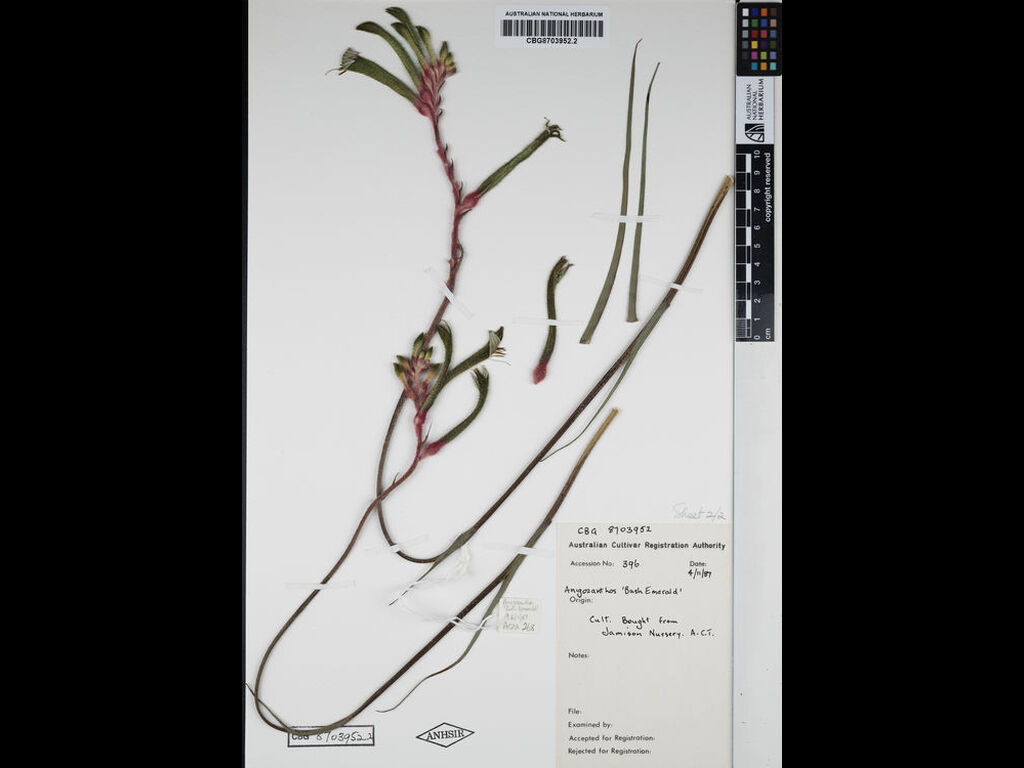Anigozanthos 'Bush Emerald'
- File Number
- 396
- ACRA Field Book Number
- 197
- Registration Date
- 15/10/1992
- Application Received
- 01/03/1987
- Family
- Haemodoraceae
- Cultivar Name
- Anigozanthos 'Bush Emerald'
- Origin
- Anigozanthos 'Bush Emerald' is a result of a cross between A. viridis and A. manglesii. The cross was made by the late M.Turner of Monbulk, Victoria. The cultivar was first received by the Authority in March 1987. Registration applied for by Biotech Plants Pty Ltd, Somersby, NSW.
- Characteristics
- DESCRIPTION: This cultivar grows 60-85 cm tall (flower spike) by up to 30 cms across. The leaves are from 25-30 cm long and have a slight glaucous appearance. The leaf margins have scattered white plumose hairs. The flowers are bright green on the perianth and bright red on the ovary caused by brightly coloured plumose hairs. The colours fade as the flower ages. Red and white plumose hairs continue on the pedicel and the main stem, gradually diminishing below the bottom flower until becoming fairly scattered. The flowers are tubular and up to 7 cm long in a terminal raceme on an unbranched inflorescence. The flowering season is late winter and spring. The flower colour of the cultivar strongly resembles that of A. manglesii.
- Cultivation
- This cultivar was first introduced in 1986. Early trials showed a superior resistance to fungal leaf spot when compared to both the parents. The rhizome growth is also superior to either parent. It is drought hardy and shows moderate frost resistance. The cultivar must be grown by vegetative means to preserve the cultivar form. It is a very useful container plant and has bird attracting qualities.
- Publication
- Australian Cultivar Registration Authority (1988), Garden Varieties of Australian Plants 1: 28
- Colour Coding
- RHS Colour Chartplumose hairs along stems and base of perianth tube: Greyed-purplegroup 187Cperianth hairs: Green group 135Banthers: Green group 144B
- Propagation
- Division or tissue culture
- Applicant Name
- Biotech Plants Pty Ltd
- Uses
- As part of a mass planting or mixed in a shrubbery, or as a spectacular feature plant. Attracts nectar feeding birds.
- Availability
- Specialist native plant nurseries
- ANBG Accession Numbers
- ACC396, ACRA453/320, CBG8910945/8804447.
- NSL ID
- -

